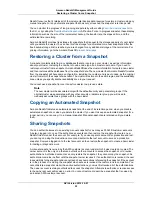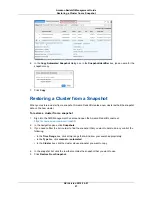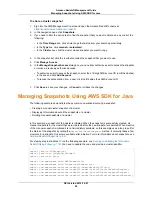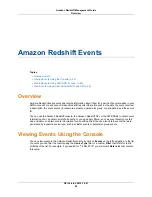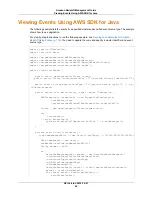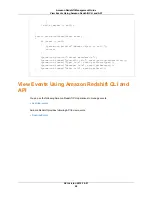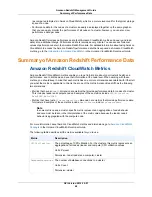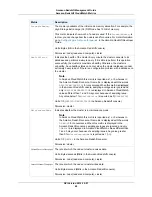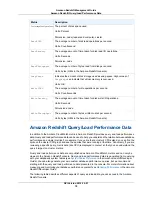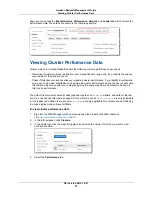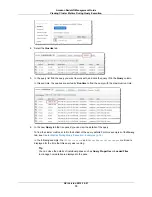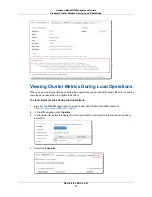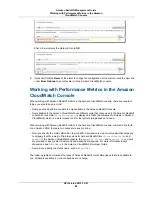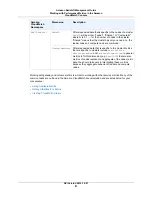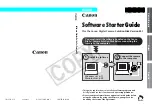
Monitoring Amazon Redshift
Cluster Performance
Topics
•
Overview (p. 67)
•
Summary of Amazon Redshift Performance Data (p. 68)
•
Working with Performance Data in the Amazon Redshift Console (p. 71)
Overview
Amazon Redshift provides performance metrics and data so that you can track the health and performance
of your clusters and databases. In this section, we discuss the types of data you can work with in Amazon
Redshift and specifically, in the Amazon Redshift console. The performance data that you can use in
Amazon Redshift console falls into two categories:
• Amazon CloudWatch Metrics — Amazon CloudWatch metrics help you monitor physical aspects of
your cluster, such as CPU utilization, latency, and throughput. Metric data is displayed directly in the
Amazon Redshift console.You can also view it in the Amazon CloudWatch console, or you can consume
it in any other way you work with metrics such as with the Amazon CloudWatch Command Line Interface
(CLI) or one of the AWS Software Development Kits (SDKs).
• Query/Load Performance Data — Performance data helps you monitor database activity and
performance. This data is aggregated in the Amazon Redshift console to help you easily correlate what
you see in Amazon CloudWatch metrics with specific database query and load events. You can also
create your own custom performance queries and run them directly on the database. Query and load
performance data is displayed only in the Amazon Redshift console. It is not published as Amazon
CloudWatch metrics.
Performance data is integrated into the Amazon Redshift console, yielding a richer experience in the
following ways:
• Performance data associated with a cluster is displayed contextually when you view a cluster, where
you might need it to make decisions about the cluster such as resizing.
• Some performance metrics are displayed in more appropriately scaled units in the Amazon Redshift
console as compared to Amazon CloudWatch. For example,
WriteThroughput
, is displayed in GB/s
API Version 2012-12-01
67
Amazon Redshift Management Guide
Overview

